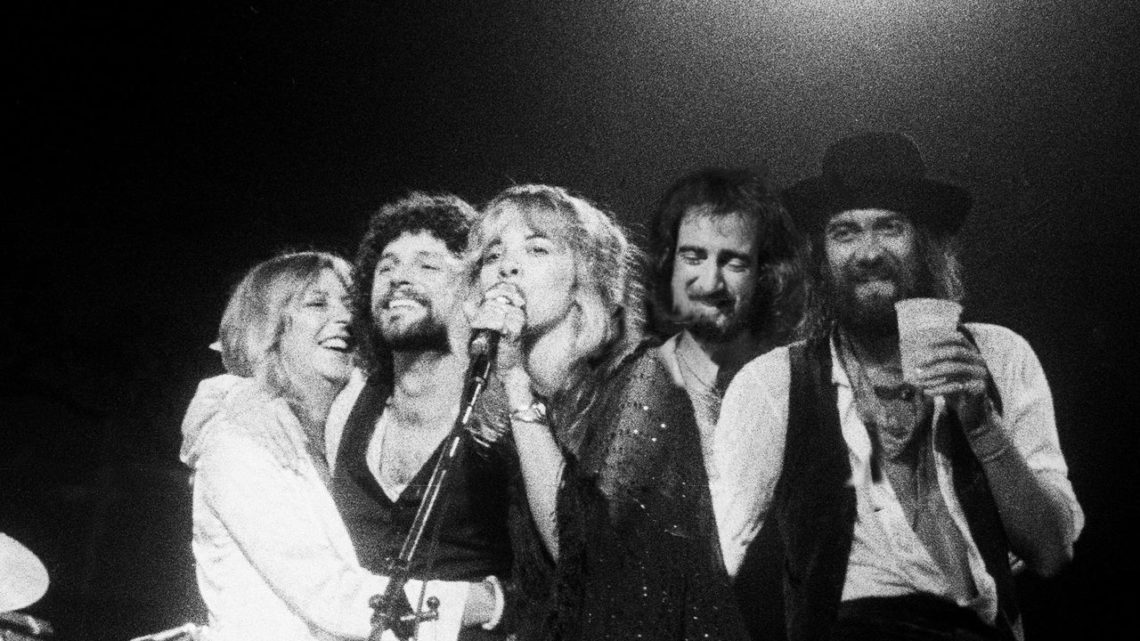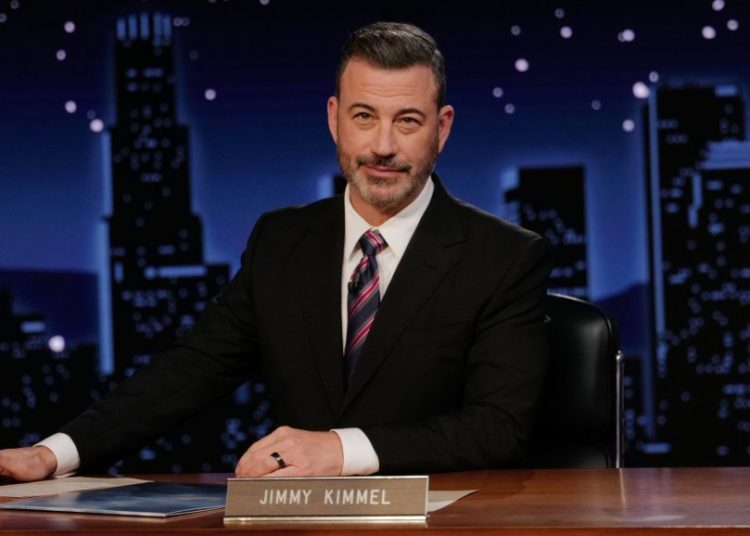Fleetwood Mac’s seminal, chart-topping record Rumours didn’t define just one generation. It’s been discovered by successive waves of fans, starting with the lucky ones who got to experience it (and all the accompanying tabloid drama) when the album was released in 1977. Twenty years later, the Mac reunited for their MTV special, The Dance, introducing themselves to Clinton-era teenagers.
And then there are those who came of age in the 21st century, like me—and have had no shortage of opportunities to get into Rumours. The points of entry into this album keep multiplying: There was Stevie Nicks’s appearance on American Horror Story’s third season, and another Ryan Murphy show, Glee, which dedicated an entire episode to the music of Rumours in 2011. There have been numerous TikTok moments, such as when a user uploaded a video of himself skateboarding and drinking cranberry juice while playing “Dreams,” the album’s No.1 hit. Then the masses discovered the band’s tension-filled 1997 live performance of “Silver Springs”—a song originally left off of Rumours, but now is an inescapable part of its lore. The record’s influence even made it to Broadway, where the storyline of the 2023 play Stereophonic seemed to borrow from the making of Rumours. Further confirming the public’s interest in Mac-like material: The production garnered a slew of accolades, including five Tonys.
But the moment everything really started to come together for VF contributor Alan Light—whose new book, Don’t Stop: Why We (Still) Love Fleetwood Mac’s Rumours hits shelves November 4—was when Taylor Jenkins Reid’s Fleetwood Mac–inspired novel, Daisy Jones & the Six, was made into a 10-episode Amazon Prime show. Light spoke with VF about why this was different than other music books he’s authored—and why he can’t seem to get away from the sound of Rumours.
‘Don’t Stop’ by Alan Light
Simon & Schuster
Bookshop
Vanity Fair: What are your earliest memories of Fleetwood Mac?
Alan Light: I was 10 or 11 when [Rumours] came out. It was one of the first records that I bought. I went to the Tusk tour the week of my bar mitzvah. I remember all the expectation around that album as the follow-up to Rumours.
When did you first feel like there was a shift in the cultural perception of the band?
Every time there was a “hundred greatest albums” poll, [Rumours] kept going up, and everything else kept going down. But I don’t know that I really thought about it that much until my son was in high school. When his friends were around, there was an awareness of Rumours that was very different from any other sort of ’70s classic rock records. They all knew every song on Rumours. And if I asked them about Born to Run, Hotel California, or Zeppelin, that [was] just old…that [had] nothing to do with them. Then there was the Glee episode. And of course, there’s the TikTok thing. And there’s Daisy Jones, the TV show. There really is something distinctive around Rumours that just isn’t present for other things you would think about as its equivalent.
I met Mick Fleetwood when I had just gotten into Fleetwood Mac, and he asked, “How do you know about our band?” And I said, “Do you remember a show called Glee?”
Every couple of years, it would keep being regenerated in the culture. They gave it a full episode of Glee, knowing this is a thing people will react to.
A driving force of the book is the young people to whom Rumours is deeply meaningful. How did you find all these kids?
I wish I could act like I’m such a great shoe-leather reporter, knocking on doors and finding people. But [I shared] one vague social media post that was just like, “Hey, if any of your kids or any younger relatives or friends who are big fans of Rumours, let me know.” And I booked 13 interviews the next day.
Mark Ronson is another prominent voice in the book, and you’re speaking with him at the book’s launch event. Why did you feel like he’d be a good person to talk about Fleetwood Mac with?
I don’t even know if there was a specific reason that I asked—and as you see, he was great. All the stuff that he contributed was really smart and perceptive. He did a thing that I love, which is that when we started to talk, a couple of minutes in, he was like, “You know what? Wait a second. Call me back in five minutes. I want to go listen to ‘Dreams’ and have the actual sound in my head, so that I know what I’m talking about when I’m talking about the sounds of these instruments.”
I really enjoyed the structure of the book, especially the second part, where each chapter is centered around a song, and associated with a topic or a theme.
I had this thought that a lot of the songs have specific stories attached to them. I wanted to talk about the TikTok of the guy on the skateboard with cranberry juice, so, we [did] that when we talk[ed] about “Dreams.” I want[ed] to talk about the “Silver Springs” reunion moment and everything that that’s become, and the way that that inspired Daisy Jones.
The hardest one [was] the opening song. “Second Hand News” is such a weird opener for this album, and there isn’t some crazy story that’s attached to it. What do you do with that? And so what I ended up writing about is that all these other blockbuster albums have blockbuster first songs. Appetite for Destruction starts with “Welcome to the Jungle,” Hotel California starts with “Hotel California,” Thriller starts with “Wanna Be Startin’ Somethin’.” Big mission statement songs. And [“Second Hand News”] is this weird, almost unfinished throwaway song. And so, what does it mean for the album that it isn’t coming in hot with this big thing blasting?
I was very surprised at how many of these listeners singled out “Never Going Back Again” as a favorite song, and then how multiple of those pointed back to that Glee episode and their treatment of the song. So I was like, “That’s where I can do the Glee story.” I wouldn’t have connected those dots. But it was something that came out of those conversations.
What is your personal favorite song on the record?
It changes all the time. Certainly, if I have to choose one, it’s “The Chain.” It just feels like sonically, thematically, that’s the one that has everything. It has quiet and loud, acoustic and rock, heartbreak and perseverance. It wraps up a lot of what the album is about in one place.
I always say that it is technically their best song. It’s a chain of different bits and pieces from over the years.
Right. Talking about the sound of the record, Ronson and Emily Lazar, who’s an engineer, makes this point: everybody talks about the sound of Rumours like it’s warm, acousticky, woody, and live-feeling. In actuality, it’s none of those things. Everything’s an overdub. It’s actually really bright and shiny-sounding. It’s not played live. But because of all the associations that we bring to the time, we ascribe all of these other meanings to the sound. And “The Chain,” the instrumental piece is the only actual live playing of all of them playing together on the record. As you said, the rest of it is all cobbled together from three different songs.
That was one of my favorite parts of the book, when you talk about the associations that people have with the album. Just looking at the orange book cover, that’s the color I think of when I think of Rumours.
And there’s none of that anywhere on the packaging, right?
It has a life of its own. What were some things that you felt were important to communicate through this book?
I think this notion of what makes something timeless rather than just being a moment in time. If you sat down the rock critic universe on December 31, 1979, and said, “Okay, the biggest records of the decade were Hotel California, Born to Run, Rumours, Dark Side of the Moon, and Zeppelin IV. Fifty years from now, which are kids going to be listening to?” Not one person would’ve said Rumours, because they would’ve said all those other [albums] are big, important statements. Those are serious art records. And Rumours is great, but it’s a pop record.
All of those other [records] feel really old and dated to teenagers, whereas Rumours still feels very relevant and contemporary. There’s a lot of questions that come out of the historical disrespect that pop music has been given, and the gender composition of this band. Where four long-haired white guys with guitars is what your parents’ band was, this band—where 2 out of 3 voices and writers are women—feels like something that’s much closer to the world that we live in now.
The most surprising thing to me was that those of us who grew up with this record really define it through anger. It’s about the tension. It’s about Stevie and Lindsey yelling at each other. It’s the greatest breakup record of all time. And so many of these younger listeners that I talked to just don’t relate to it that way at all. They know how the story ends. We lived through it not knowing what was coming. Were they going to be able to survive through this?
Do you think that the drama and mystique surrounding Rumours could happen in today’s media landscape?
That’s a really good question, because everything is discovered and covered in real time as it happens. Can you imagine if there was a relationship within a band or a group, and it broke up in the middle of the recording sessions? What the coverage would look like the next day? And how that would take over how people looked at that record? I think of the White Stripes and the “Are they brother or sister, or are they married?” thing that they were able to pull off for a little while, which is impressive in the 21st century. Kids listen to songs that they like, but if there’s a full project that they commit to—if it’s a Taylor album, if it’s a Beyoncé album, if it’s a Sabrina album—it’s so much about the backstory and the narrative. That is what an album experience is now. And Rumours is the blueprint for that. That’s become the dominant way that an album exists and is experienced now.
Even relating it back to right now, the new Lily Allen album…
Right. Exactly. “Here it is. Here’s the whole thing.” I love that album, by the way. But yes, that’s a thing that people are listening to because it’s taking you through that situation. And that’s a big thing that Rumours created. Not intentionally, not strategically, but they set the precedent for that.
You’ve written a lot of books about music. What was different about working on this one?
When I did the “Hallelujah” book, I was really interested in hearing from people talking about the song in their own lives. What I found was that anytime I mentioned the song, somebody would say, “We played it at my uncle’s funeral.” “It was the first dance at our wedding.” “My sister played it when their baby was born.” It just seemed to have this presence that I found really inspiring. Because when you do this for a living, you can get really cynical about music. But then you hear from people and realize, “Oh, wow. Okay, this stuff is still really important to people.” So whatever the next thing I did was, I wanted to lean into that. And obviously, as we talked about earlier, realizing that there’s this unprecedented, never-ending popularity for Rumours—that seemed like an opportunity. So I think that’s what was different about it: really trying to center those voices of listeners.
The post Yesterday’s Gone, but Fleetwood Mac’s Rumours Is Forever appeared first on Vanity Fair.




